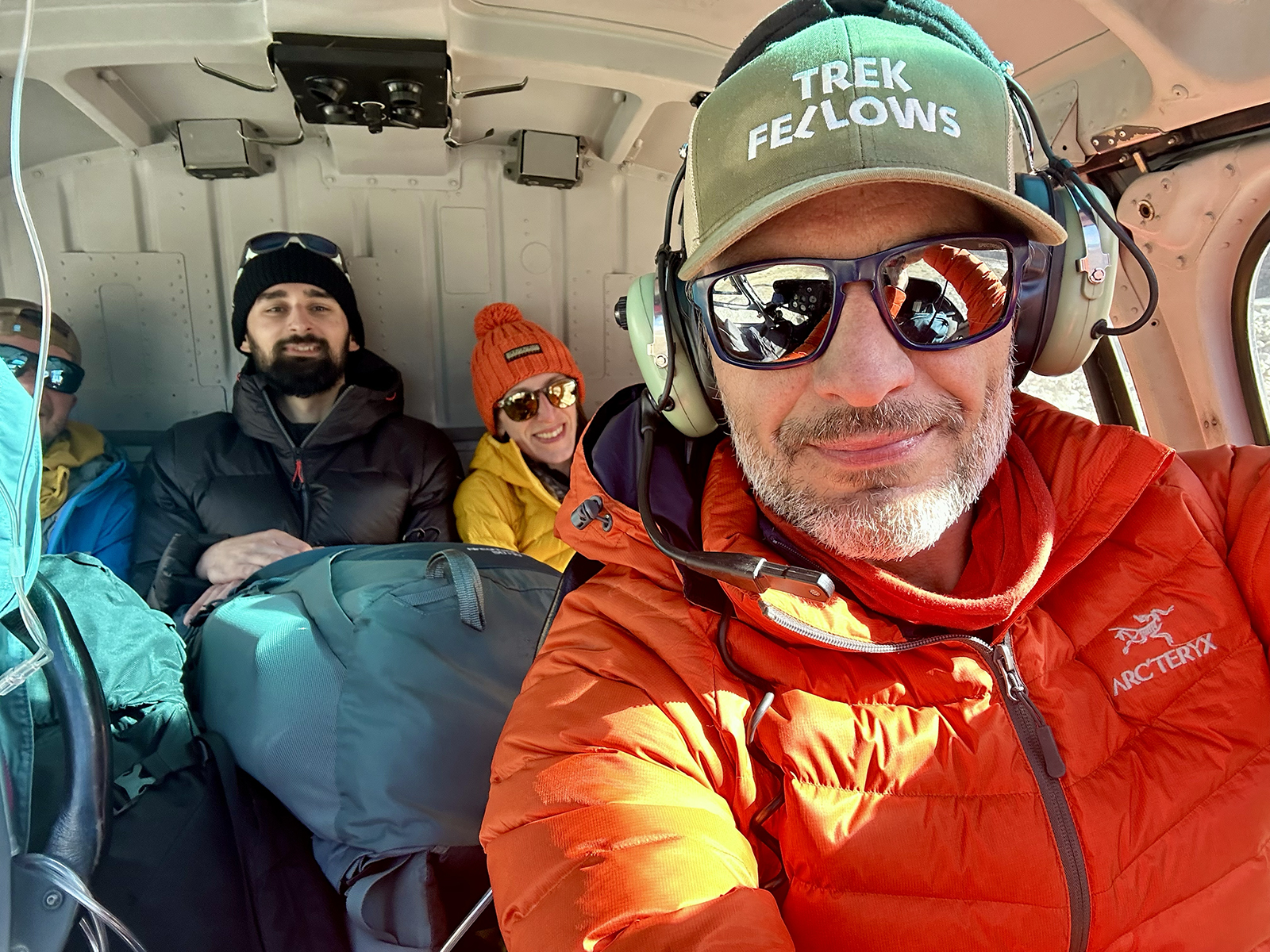Why do we fly helicopters?
Introduction
The ascent to high altitudes in the Himalayas is usually long, challenging, yet incredibly beautiful. After all, that's why we go to these mountains 🙂
Descent is somewhat less physically demanding, but it takes up valuable time. Motivation often tends to fade somewhere on the way down from the summit to base camp.
Time
Time is a very important factor for many of our clients. The classic itinerary for treks targeting 6,000-meter peaks is typically designed for 3 weeks. This makes a lot of sense—proper and thorough acclimatization is crucial for summits and requires time. When using a helicopter for the return from the mountains, acclimatization remains just as effective as with the 3-week variant, but the overall trek (expedition) duration is reduced to 10 days of vacation, a total of 14-15 days.
Another factor is the return from the mountain, which usually requires several days of descent. Work, family, or other reasons mean that many people simply cannot afford the time for such a trip. With the use of helicopter technology, which is directly owned by our partners in Nepal, the descent from base camp is shortened from days to minutes.

Comfort
Climbing even an easy 6,000-meter peak takes a lot of energy. After such an effort, fatigue usually sets in, as well as a sense of accomplishment or a dream fulfilled. Instead of a long descent through terrain you've already experienced and seen, you can take a helicopter flight. In about 15-20 minutes, we're back at the starting point of the trek—in Lukla. Nothing stands in the way of celebrating the summit in thicker air! 🙂
It's also possible to book a helicopter for the return from Lukla to Kathmandu. We've even had a summit in the morning and a celebration in Kathmandu by evening 🙂 In Nepal, almost everything is possible. (If you know how to make it happen!)
Experience
Not everyone regularly flies in helicopters. In the environment of these beautiful high mountains, such an experience is one of those truly exciting ones and will bring a smile to anyone's face. Each helicopter has 5 passenger seats - this is one of the reasons why our treks are limited to a maximum of 9 people.
Safety
All of our helicopters are of the
Airbus AS 350 B3
.
model. These machines are ideal for mountain flights and are very popular in the Himalayas. There are about 40 of these helicopters in Nepal, and they have excellent technical and pilot support here.
The B3 performs well at high altitudes - we often start from over 5,000 meters (although not with a fully loaded machine, and the pilot uses supplemental oxygen). One of these helicopters even landed (and took off) at the summit of Mt. Everest.
video here.
Of course, thanks to the fact that these helicopters are owned by our partner, our machines (weather permitting) are immediately available in case of unexpected complications for emergency evacuation from mountainous terrain. We have no obligation to order a flight from somewhere complicated, arrange permits, or beg the owners, or document payments, etc. The condition for emergency evacuation is, of course, valid insurance. In that case, all it takes is one signature on the medical report, and your concerns with the insurance company are taken care of.
I personally enjoy flying in helicopters very much; I always feel safer in them than in other forms of transport in Nepal. 🙂
A short video from one of our flights (Mera Peak trek, flight from Khare to Kothe)
.
Mišo Gabriž
